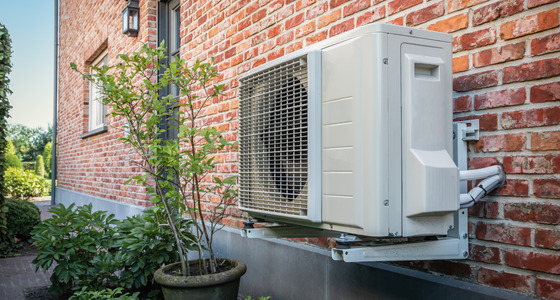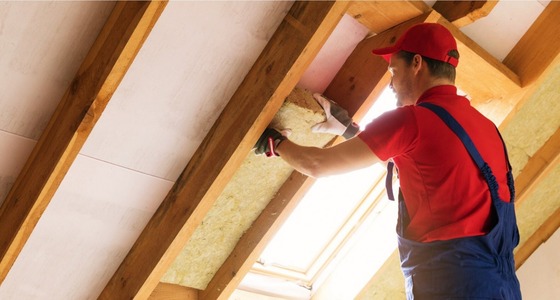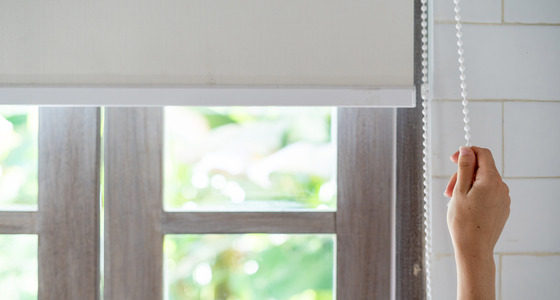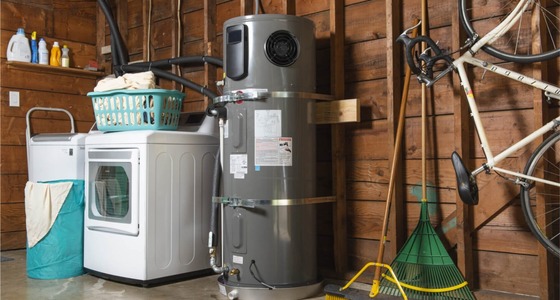Make the switch to a heat pump
A heat pump is an energy-efficient alternative to other types of home heating systems, such as a natural gas furnace or electric baseboards. A heat pump provides both efficient heating and cooling to help keep your home comfortable year-round.
We have rebates available for installing a heat pump in your home and free heat pumps for eligible income-qualified households.
On this page:
- Benefits of heat pumps
- How do heat pumps work?
- Types of heat pumps
- Heat pump videos
- Factors to consider when choosing a heat pump
- Heat pump offers
- Using and maintaining your heat pump
- Apartment heat pump tips
Benefits of heat pumps
- They provide heating and cooling all in one.
- They run on clean hydroelectricity so they'll reduce your household's greenhouse gas emissions if you switch from fossil fuel heating.
- They're up to 300% more efficient than electric baseboard heaters.
- They're up to 50% more efficient for cooling compared to a typical window A/C unit.
- They could be less expensive to operate than a natural gas furnace.
Heat pump cost calculator
See how much you could save in home heating costs by switching from a natural gas furnace to an electric heat pump.
How do heat pumps work?
A heat pump uses electricity to move heat from one place to another. In the winter, it pulls warm air from outside and moves it indoors to heat your home. In the summer, it acts like an air conditioner by moving warm air from inside your home to outside, while circulating cool air inside.
Types of heat pumps
In B.C., an air-source heat pump is the best option. They take heat from the outside air and move it indoors.
There are two main types of air-source heat pumps: ductless and ducted systems.
Ductless heat pumps
A ductless heat pump features an outdoor unit that gathers heat from the air and transfers it via refrigerant lines to one or more heads mounted inside, offering multi-zone heating or cooling. These systems are easy to install but can become less efficient with each head that you add.
The ductless system doesn't rely on ducting in the home to move air around, making it a good alternative to electric baseboards.
Temperature is controlled using a remote control for each head. Or, a traditional thermostat can be installed for some systems.
Both mini-split and multi-split heat pumps can be referred to when talking about ductless options. A mini-split can refer to all ductless heat pumps, including heat pumps with multiple heads, however it typically refers to a system that has a single indoor head. Multi-split heat pumps always have multiple indoor heads.
Ducted heat pumps
A ducted heat pump (also known as central heat pump) has an outdoor unit connected to an indoor unit and uses ducts to move warm or cool air throughout the home.
Since this system requires ducting, it's a good option to replace an existing natural gas furnace. Just note that your existing ducting may require some modification.
Temperature is controlled via a single central thermostat.
A ducted mini-split heat pump is also an option. It works in the same way as a ductless system, except it has a hidden head (usually in the attic) with ducting running to vents in two or more rooms.
Watch our video playlist
Considering switching to a heat pump? Watch our series of short videos on heat pumps including how they work, effectiveness in cold climates, common misconceptions and more.
Factors to consider when choosing a heat pump
1. Your current heating load
Your heating load is the amount of heating that your home needs to maintain the indoor temperature at a comfortable level, which is largely based on your home's size. If you're buying and installing a heat pump in B.C., and you want to be eligible for a rebate, the model you buy needs to be your primary heating system and have the capacity to heat a minimum of 50% of your home to 21ºC for the entire heating season.
A Home Performance Contractor Network (HPCN) member can install your heat pump, but first they'll conduct a heat load analysis of your home to help determine the right system.
2. Efficiency ratings and compressor types
When looking at different heat pump models, there are two key things to be aware of: the Heating Season Performance Factor (HSPF), which refers to its heating efficiency, and the Seasonal Energy Efficiency Ratio (SEER), which refers to its cooling efficiency. The higher the rating, the more efficient the heat pump is at either heating or cooling.
The Coefficient of Performance (COP) measures how much heat or cooling a heat pump can produce with every watt of energy. The higher the COP, the more efficient the heat pump.
The capacity maintenance ratio indicates how well the heat pump will perform in winter conditions (-15°C). The ratio (percentage) indicates how much of the heating load the heat pump can meet. If the ratio is less than 100%, talk to your HPCN member about heat pumps that are best suited to handle the heat load needed where you live.
You'll also need to choose which type of compressor you want. Heat pumps with variable-speed compressors are more efficient than those with single-speed or two-speed compressors, which means they'll use less electricity and cost less to run. And to be eligible for our heat pump rebates, your heat pump must have a variable-speed compressor.
3. Your home's insulation and ducting
Like any heating system, the more insulated your home is, the more efficient your heat pump will be. If you live in an older home, you may want to first consider upgrading your home's insulation. Doing this before getting your heat load analysis will help you more accurately determine the size of the heat pump you need. Proper insulation may even enable you to install a smaller, less expensive system.
If you don't currently have ducting (e.g. your home is currently heated by electric baseboards), a ductless system is a good alternative that's easy to install.
If you have existing ducting (e.g. heated by natural gas, oil or electric furnace), a central heat pump system can typically make use of that ducting. Your registered contractor can advise you on the right system for your home.
4. Where you live in B.C.
It's important to work with your Home Performance Contractor Network (HPCN) member to determine what heat pump is best for your home in the region you live in. They may recommend a cold climate-rated heat pump, which are designed to operate in temperatures as low as -30ºC. You may require supplemental heating to meet the heat load of your home, depending on where you live in B.C.
5. Your budget
Like efficiency, the cost of buying and installing a heat pump can vary greatly, depending on the size of your home and the variable-speed system you choose.
The cost of a heat pump can vary depending on the type, model and installation needed to support your home's characteristics and size. It ranges from about $6,000 to $14,000, and can cost more if you need more indoor heads or other modifications.
Heat pump offers
Heat pump rebates
If your home is currently heated by electricity, you can get rebates of up to $4,000 for installing a heat pump.
Rebates for condos and apartments
Individual condo owners can upgrade your unit with rebates of up to $2,250 for energy-efficient heat pumps.
Free heat pumps for income-qualified households
Improve your home’s comfort and energy efficiency with a free heat pump for eligible households through our Energy Conservation Assistance Program.
Watch: How to apply for heat pump rebates
Learn how to apply for heat pump rebates through our Home Reno Rebate Program. If you’re interested in the heat pump rebate offer for condos and apartments you can learn more about how to apply here.
Contractors to install heat pumps
A Home Performance Contractor Network (HPCN) member can help you understand the best options for your heat pump installation. Start early, as it may take some time to connect with a contractor due to the growing popularity of heat pumps.
Check out our guidelines to understand your home's electrical capacity and our questions to ask your heat pump contractor [PDF, 90 KB].
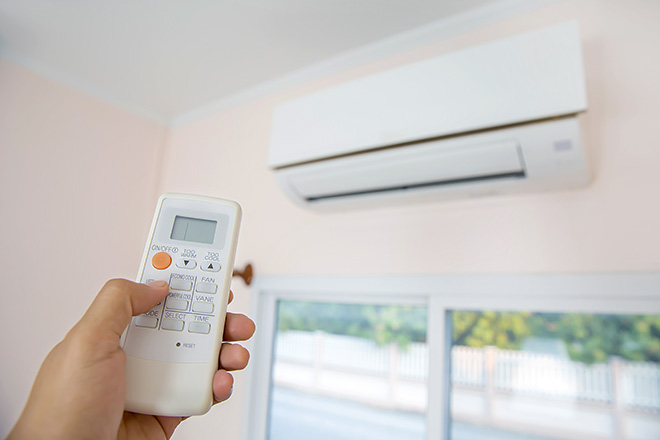
Using and maintaining your heat pump
Using your heat pump properly and maintaining it regularly will offer you the best performance, energy savings, and the most lifespan out of your unit.
Here are a few tips to help you use your heat pump efficiently year-round.
1. Get regular maintenance and inspections
Like all other heating systems, regular maintenance will ensure your heat pump remains in peak working order and will provide you with efficient, cost-effective heating. Your heat pump user guide will provide guidance on the optimal setup for your system and recommended maintenance schedule. Consider scheduling regular maintenance every one to two years.
Schedule a follow-up with your installer or maintenance visit in the season opposite to when you first installed your system. For example, if your system was installed in the winter, have the system checked in the summer. The installer will check the system to ensure it's set for optimal efficiency and comfort for the season, and in good working condition.
2. Set it and forget it
Heat pumps work best when holding a steady temperature. Find a temperature setting you're most comfortable with and try to minimize changes. Frequent setting changes can impact its efficiency, and your energy costs.
3. Avoid "auto" mode
Your heat pump may have an "auto" feature that determines if the space needs to heat or cool. In the winter, ensure the unit is set to "heat" and in the summer, set to "cool", not "auto". The auto mode allows the heat pump to decide whether to heat or cool the space, but it doesn't always know best.
4. Change your filters
Dust, dirt, pollen, and pet hair can accumulate in your heat pump's filters over time and reduce airflow. Regularly changing filters provides better indoor air quality for occupants.
Clean filters in between replacements
Generally, filters on indoor units should be cleaned several times a year and replaced once a year. Cleaning a filter can improve the airflow in your home by as much as 30%. Cleaning frequency will depend on your system type (for example, central system ingest more dirt from returns on the floor), whether or not you own pets, the number of occupants in your home, and more.
Check your manual for recommended filter change and cleaning intervals and instructions.
5. Clear away clutter
Regularly check on your indoor and outdoor unit to ensure they're set up for adequate air circulation. Make sure the area around the indoor unit isn't cluttered by furniture or curtains, and that the outdoor unit isn't blocked by snow, foliage or outdoor equipment.
Check out our tips for window coverings, fans and insulation for smart ways to minimize the amount of heating and cooling your home needs.
Apartment heat pump tips
Heat pumps are increasingly more accessible for people living in apartment or condo buildings. If you're considering installing a heat pump in your unit, here's what you need to know.
Are heat pumps right for apartments?
Heat pumps can be a smart choice for many apartment or condo units, helping improve comfort year-round and reduce energy use. When considering a heat pump for your apartment, keep these factors in mind:
- Space: Your unit needs enough wall or ceiling space for one or more indoor heads.
- Outdoor installation: The outdoor unit must be placed in a location with good airflow, such as a balcony, rooftop, or exterior wall.
- Noise: Modern heat pumps are generally quiet, but it's important to consider the outdoor unit's placement near neighbours.
- Strata approvals: If you live in a condo or strata building, you'll likely need approval before installing a heat pump, especially if it affects shared spaces or the building exterior.
- Professional installation: Work with a licensed contractor experienced in apartment heat pump installations to ensure proper sizing and compliance with local codes and strata rules.
If you're unsure whether a heat pump is suitable for your unit, a qualified contractor can do a site visit and help guide you through your options.
Mini-split vs. multi-split: what's right for you?
If you're installing a ductless heat pump in an apartment, your contractor may recommend either a mini-split or multi-split system. Here's what that means:
- Mini-split systems use one indoor head connected to one outdoor unit. They're often a good fit for open-concept or smaller units where a single head can provide heating and cooling throughout the space.
- Multi-split systems have one outdoor unit connected to two or more indoor heads. This may be a better option for larger or multi-room apartments where you need to control the temperature in separate areas.
Your contractor will assess your unit's layout, size, and insulation levels to recommend the best system for your needs.
Tips for getting started
Talk to your building management or strata council early. Even if you're not sure yet, it's helpful to find out what the process looks like for getting approval. We've created a guide to navigating the heat pump approval process with your strata [PDF, 10.5 MB].
Learn how to qualify for a rebate. The Condo and Apartment Rebate Program offers rebates to help lower the cost of installing a heat pump in your apartment unit.
Get quotes from licensed contractors. Look for professionals with experience installing heat pumps in apartments or multi-unit buildings. To qualify for rebates, it must be installed by a Home Performance Contractor Network (HPCN) member.
